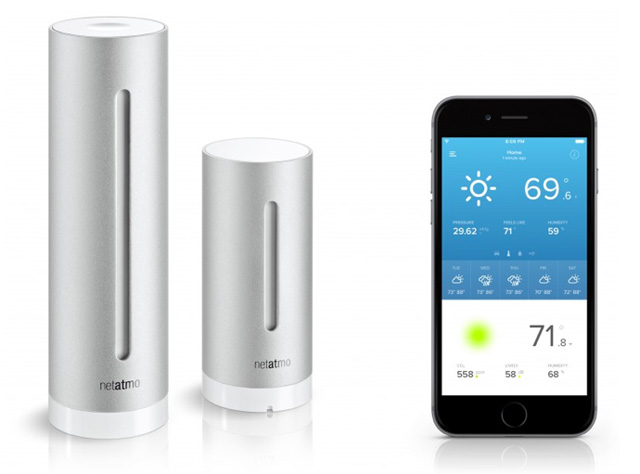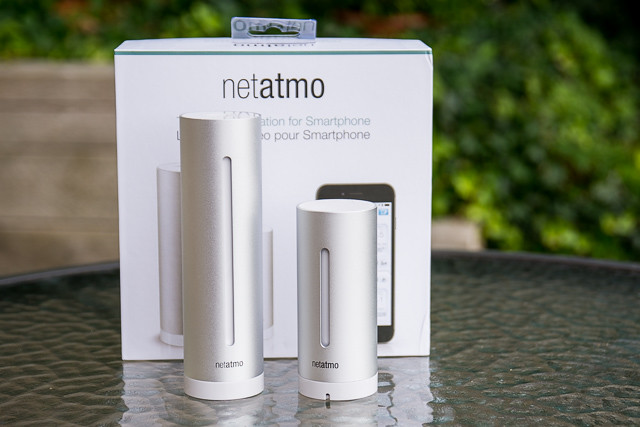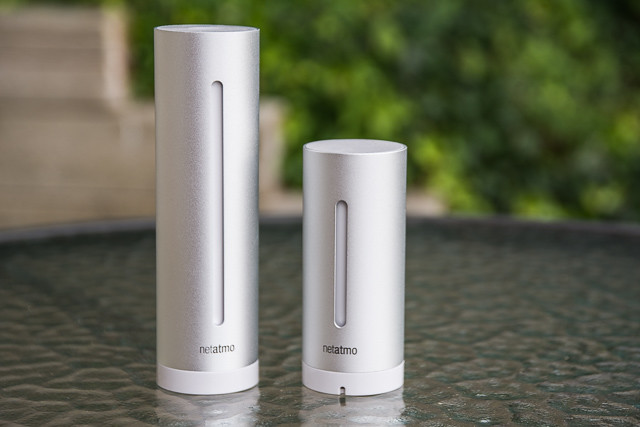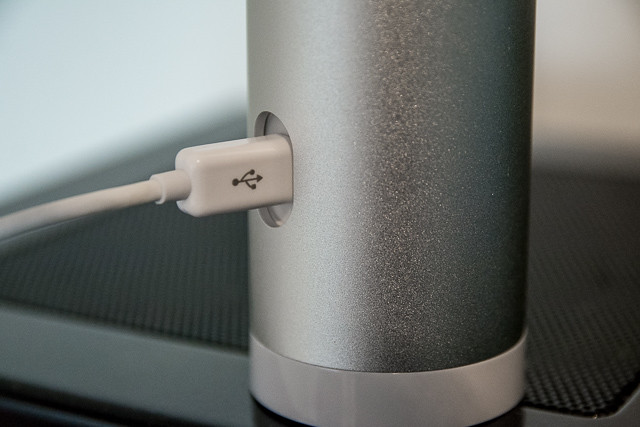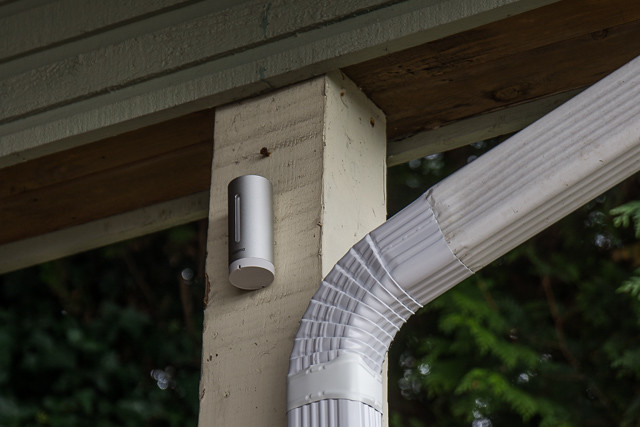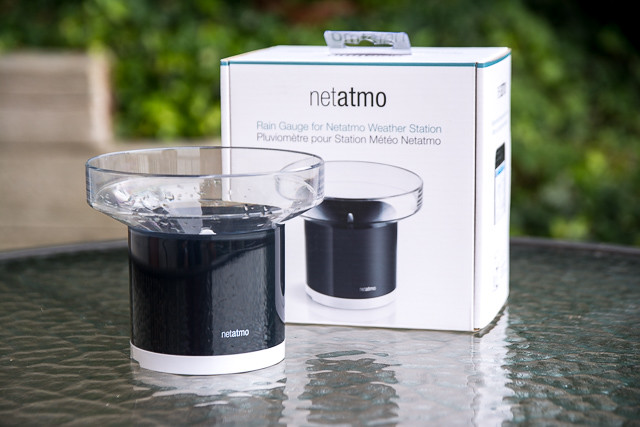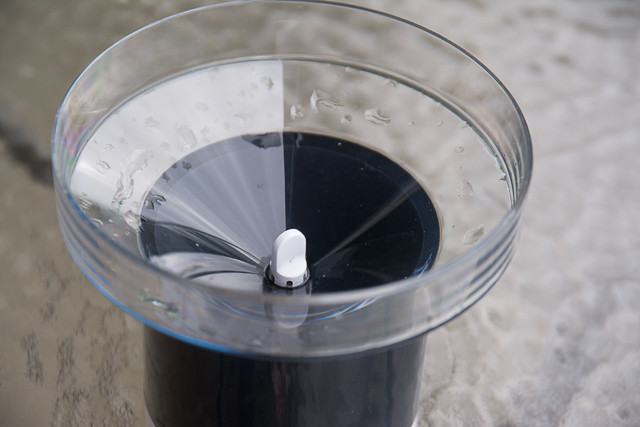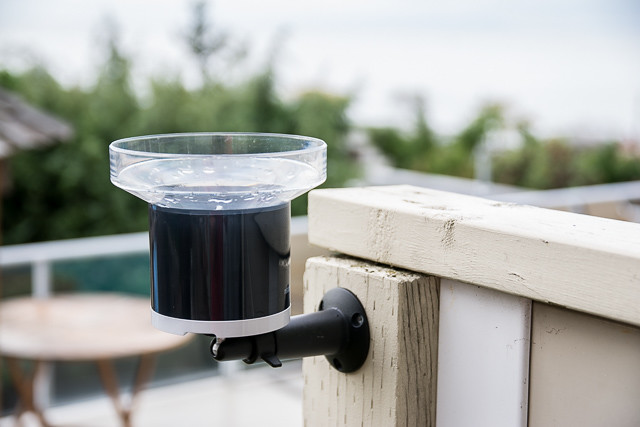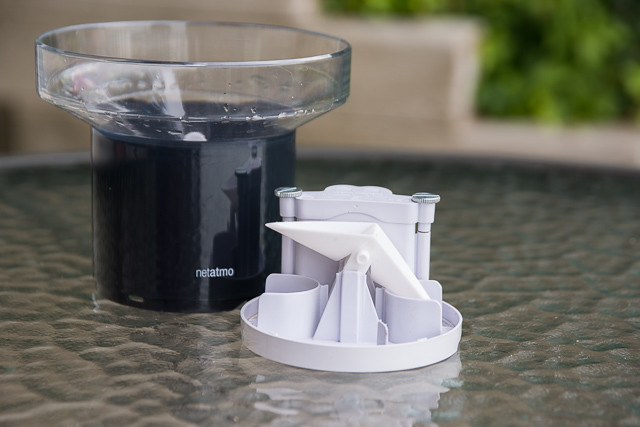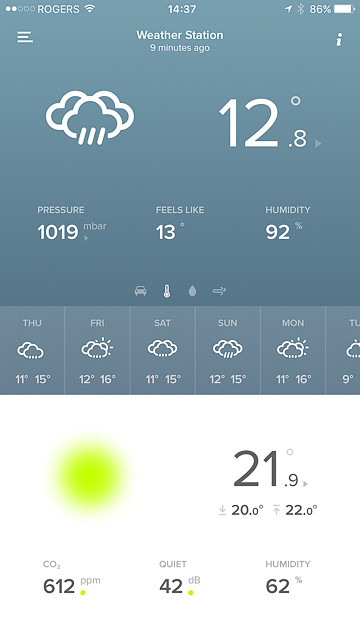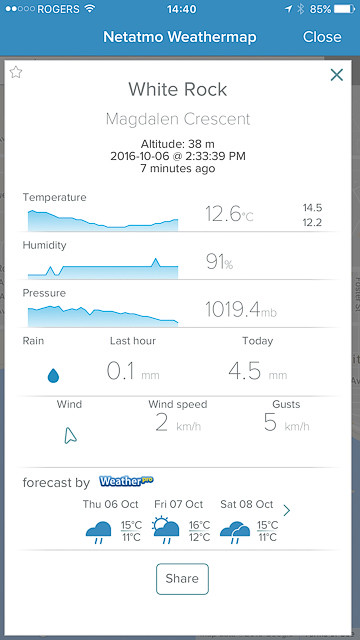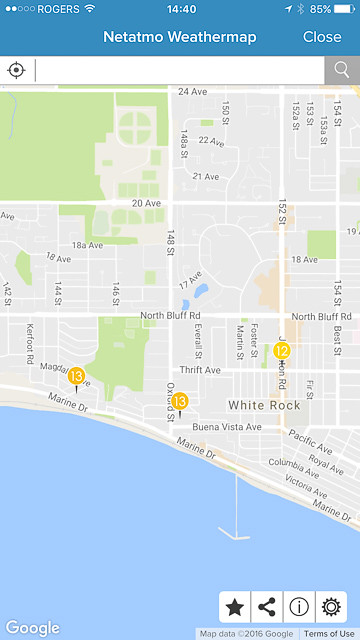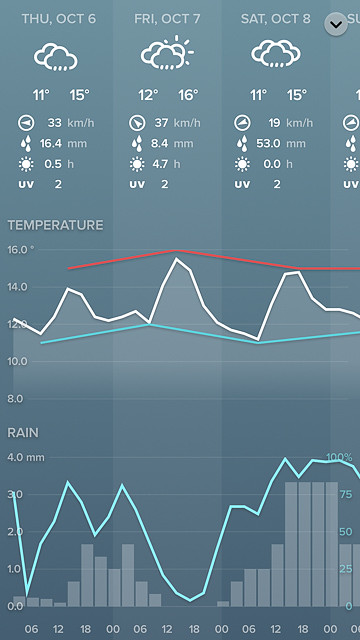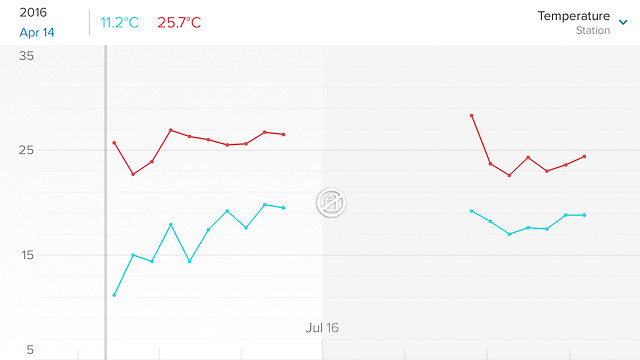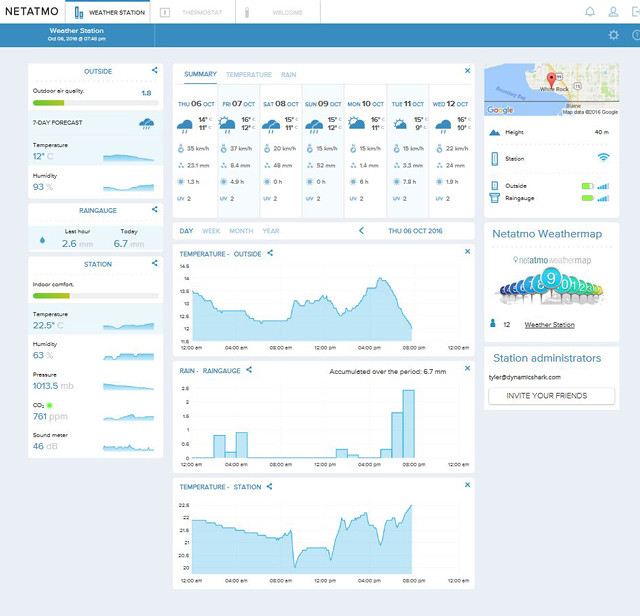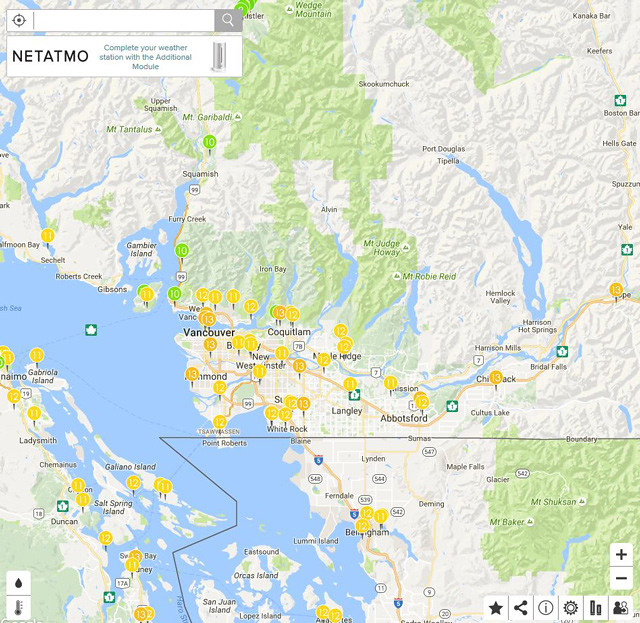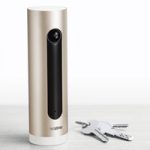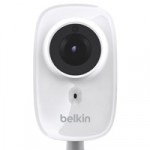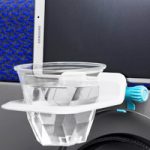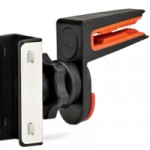After recently reviewing Netatmo’s Welcome Indoor Security Camera and Tags, we decided to test-drive their flagship product, the Netatmo Weather Station and smartphone app.
A weather station isn’t something we commonly think of owning at home, especially in space-challenged apartments and condos, however Netatmo’s has a small footprint, ideal for city dwellers—with easy setup, installation and maintenance.
The Weather Station includes both an indoor and outdoor module and offers on-demand weather info at your fingertips, whether you have a meteorology degree or are simply interested in the latest forecast. Owning a personal weather station in your home is pretty cool (and doesn’t require a science degree to set up either)!
Indoor Module
The Indoor Module has the same look and feel as the Netatmo Welcome Indoor Security Camera but in a different colour. The module’s silver metallic cylindrical design incorporates an LED status strip.
The touch-sensitive button on top has two functions: accessing on-demand weather reports and configuring the station.
The Outdoor Module, Wind and Rain Gauges report back to the USB-powered Indoor Module, which needs to be placed within reach of your home’s WiFi network.
It’s also worth noting that the Outdoor Module and gauges communicate with the Indoor Module via radio frequency (separate from your WiFi network).
The Indoor Module reports the following data:
– Indoor temperature
– Indoor humidity
– Carbon dioxide (CO2)
– Ambient sound
– Barometric pressure
Outdoor Module
The Outdoor Module claims to be weather-proof, though other Netatmo forum users recommend keeping it protected from the elements.
Placing the module in a covered area outdoors will help overall performance.
Rain Gauge
The Rain Gauge collects and measures rainwater. I used a Netatmo mount though I’ve seen examples online of users who’ve left it on the ground to collect rain.
My Rain Gauge has been collecting rain water over the past month and looks to be doing its job fairly well; it’s a pretty neat aspect of the Weather Station system.
A few forum members have commented that calibrating the gauge is anything but trivial. The manual directs users to pour 100mm of rain and count the clicks to calibrate it. Where it gets tricky (according to forum members) is finding a way to precisely drip 100mm of water over a period of 60 minutes.
I don’t think I could hold my hand steady enough for an hour while dripping 100mm evenly into the Rain Gauge, so I just stuck with the default settings.
Fortunately, there’s two other Netatmo Weather Stations in my area for me to compare rainfall measures with, and my levels have been close to theirs thus far.
I also like that the Netatmo Station app sends me alerts when there’s been 3mm of rain, which in Vancouver happens fairly often.
The downside to the Netatmo Rain Gauge, according to forum members, is snowfall. From their experience, the gauge can’t measure snow so it’s advisable to immediately clear off any snow before it accumulates.
Birds can also be an issue. If they poop into the collector it could throw off the stat collection. Checking the Rain Gauge periodically and cleaning it if needed is the only way around that.
Wind Gauge
The Wind Gauge is normally placed above the home. As I don’t have access to the top of our building, I put it on our back fence, a spot that receives a bit of wind from the ocean. Use your smartphone’s compass app to help align the Wind Gauge towards the north.

[Netatmo Wind Gauge Ultrasonic Transducers]
Viewing Collected Data
There’s two options for viewing collected data as well as checking the forecast with your Netatmo Weather Station: Netatmo’s smartphone app (iOS and Android) or a web browser. Both options offer the same information in a neat and tidy format.
Netatmo App
The Netatmo App is used to set up and configure your Netatmo Weather Station and external modules. It’s also used to view collected data and to forecast weather data.
The Netatmo app’s main screen contains current temperature, what it feels like (humidex, wind chill), barometric pressure, humidity, a weekly forecast and more (for both indoor and outdoor units).
When you tap on the weekly forecast, the app shows a day-to-day weather format. So far the app’s been very handy in looking at the predicted accumulation of rain in my area.
While on the main screen, swipe to the right for viewing Rain Gauge data: Accumulated amount, forecast and hourly rate. Swipe again to the right for Wind Gauge data.
If you rotate your smart phone from vertical to horizontal orientation, the app loads historic data that’s been collected from your weather station.
The above two screen shots show accumulation of rain (in mm) and indoor temperature (in Celsius). It’s pretty neat to go back and check previous data.
My Netatmo
My Netatmo is the web app equivalent of the Netatmo App. You also have the option to share data on various social networks. You can invite your friends to check out your weather data, but they require their own Netatmo Account. I know some people may not be willing to sign up for yet another website, even if it’s free.
My #Netatmo #Weather data for Rain fall here in #WhiteRock https://t.co/nhycmzyHUp #netatmo pic.twitter.com/1WSE10JmhU
— Tyler Ingram (@TylerIngram) October 7, 2016
A neat little feature is being able to tweet out images of the graphs you collect.
Overall Thoughts
I’ve had the chance to play with the Netatmo Weather Station and external modules for about a month now. It’s been great fun too. I love to geek out watching the Rain Gauge collect water and report how much rain has accumulated.
Another great feature is the option to check out other people’s Weather Stations in the area. I was quite surprised to see how many people in the Lower Mainland actually have them set up, almost like being part of a crowd-sourced Weather Service.
The above image shows all Netatmo Weather Stations in the area, including some south of us in Washington State too, which is a lot more than I expected to see.
This is a great product for those who wish to know basic (and historical) weather data near their home or office.
Those with meteorology degrees (or extreme hobbyists) may not find the data provided as detailed as they’d be used to. I am by no means a weather hobbyist but I love the data that the Weather Station captures and displays.
As mentioned above, the system’s easy to set up and access on any of my wireless devices around the home. And I especially like that I can view weather data at points of interest without needing to view nearby airport weather conditions.
In fact, someone on Hornby Island (our favorite local getaway) has a Netatmo Weather station installed so I can check the island’s weather as opposed to the nearest airport weather station which is a wee bit further away.
Netatmo’s Weather Station retails for US $179, Rain Gauge for $79, Wind Gauge for $99 and Mount for $24.99. All components are available via Netatmo’s site, at Best Buy, London Drugs and other major retailers. I was sent the Netatmo Weather Station and all components mentioned to test drive for this feature. Opinions, as always, are my own. With the exception of top image, photos by Tyler Ingram.
